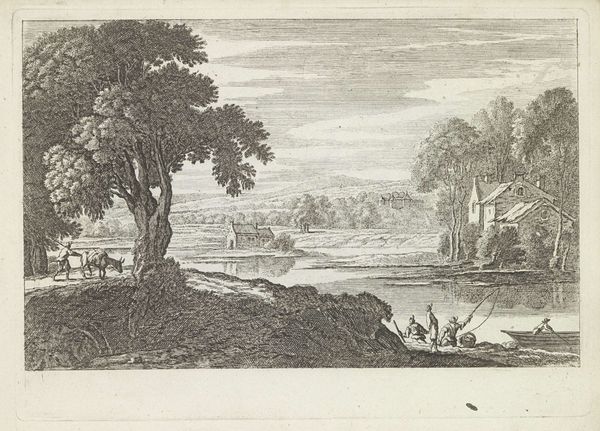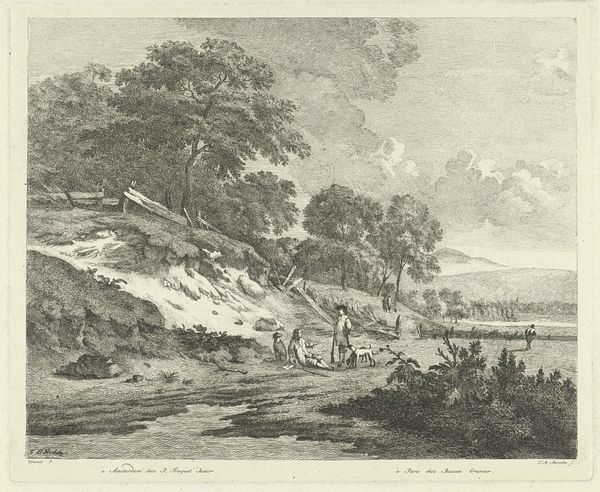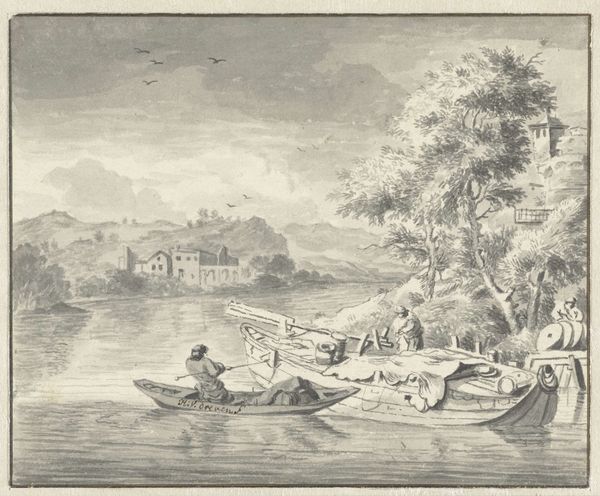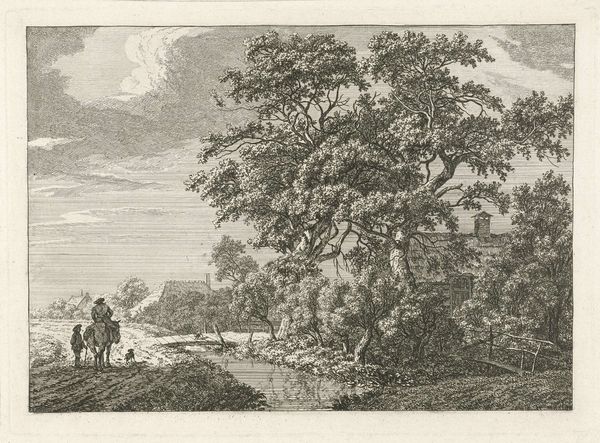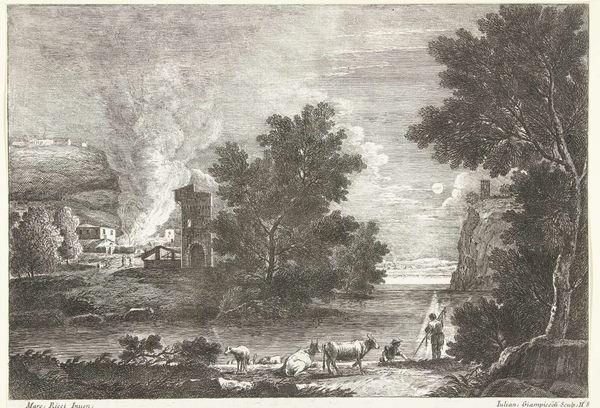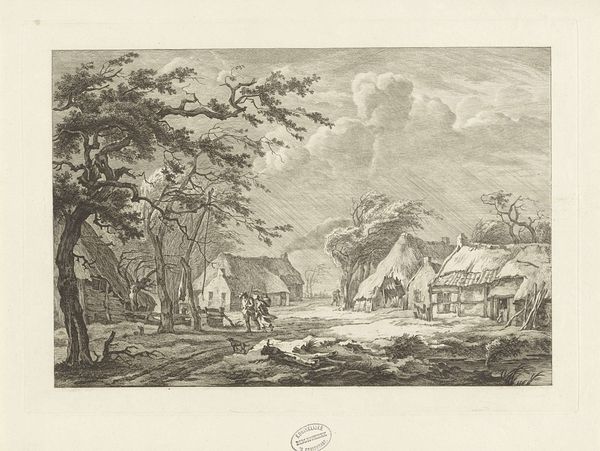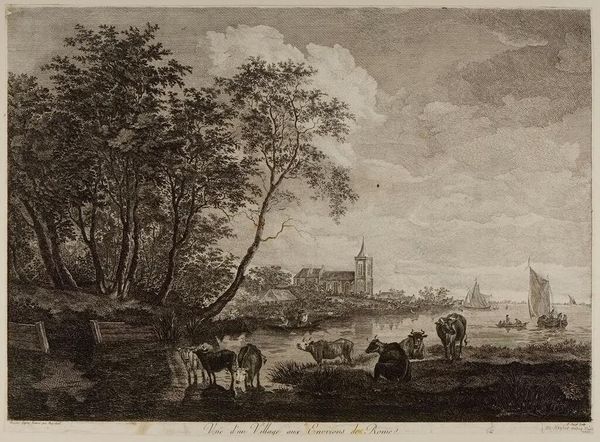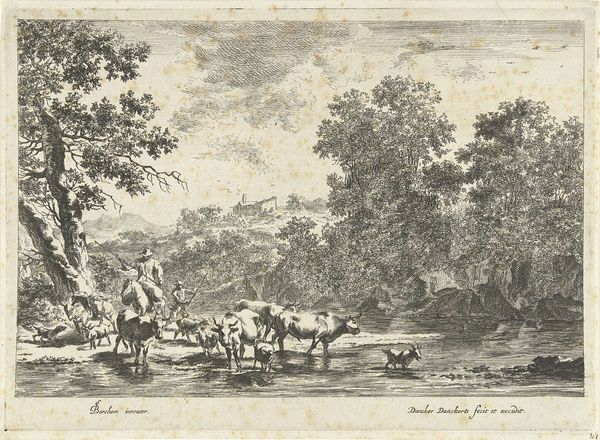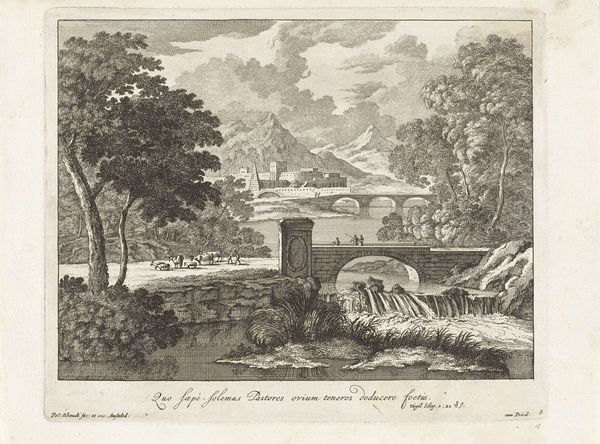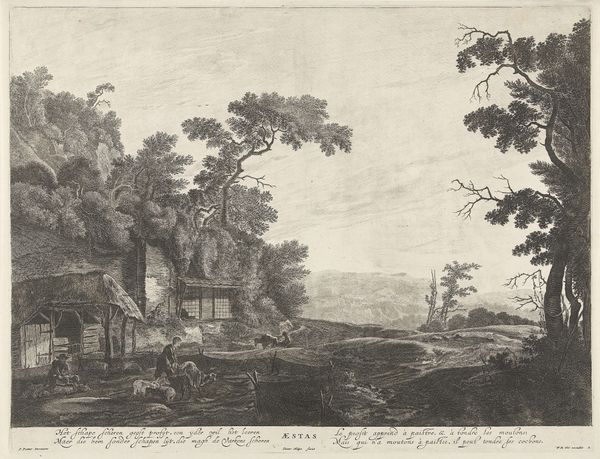
print, etching
#
baroque
# print
#
etching
#
old engraving style
#
landscape
#
genre-painting
Dimensions: height 406 mm, width 527 mm
Copyright: Rijks Museum: Open Domain
Editor: Here we have Pieter Nolpe's "Landschap met jagers: het element aarde," an etching dating from 1640 to 1706. The intricate detail achieved through etching is striking, but I’m curious about how to approach understanding something with such varied activity happening. How do you interpret this work, considering its formal elements? Curator: Consider how Nolpe orchestrates visual movement through line and contrast. The strong horizontal lines of the architecture are juxtaposed against the organic forms of the landscape and figures, guiding our eyes. Note also the sky: the engraver's light etches across the sky. It’s interesting how he utilizes varied etching techniques to delineate textures and forms, would you agree? Editor: I do. The variation in line weight creates such depth. The figures become softer at the distant horizon. Why draw the viewer in, only to distract them with varied line textures? Curator: The distribution of value creates visual pathways. Dark foreground elements lead towards brighter, more diffuse areas, a conventional method that orients and sustains our focus. The linear perspective draws us deeper into the artwork. The foreground details of hunters and dogs create rhythm through varied repetition, don’t you agree? Editor: Definitely, and it creates an engaging narrative scene. Looking at Nolpe’s landscape focusing only on form helps see that he used landscape to convey a complete story. I might’ve overlooked those intricacies! Curator: By deconstructing Nolpe’s design elements in order, one sees an image full of vitality. This piece offers a chance to investigate techniques and construction by which artists achieve powerful scenes, or narratives in the visual language available at their fingertips.
Comments
No comments
Be the first to comment and join the conversation on the ultimate creative platform.
